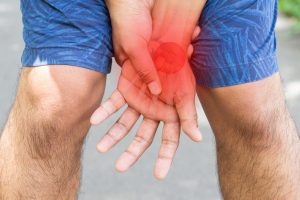Femoral acetabular impingement (FAI) or hip impingement as it is commonly referred, is a condition that affects many young adults who are involved in sport and exercise.
The condition us ually causes pain in the hip or groin area. Since the start of the 2000’s there has been an explosion in the number of people diagnosed – and operated on – with this condition. Data from the U.S. showed a 369% increase in the number of operations for hip impingement between 2004 and 2009. However, there is now a growing international expert consensus that surgery may not always be necessary, or indeed beneficial. A 2013 study of patients following surgery for hip impingement showed that while 68% were quite happy with the result of the surgery – the remaining 32% patients within the study were less happy with the outcome.
ually causes pain in the hip or groin area. Since the start of the 2000’s there has been an explosion in the number of people diagnosed – and operated on – with this condition. Data from the U.S. showed a 369% increase in the number of operations for hip impingement between 2004 and 2009. However, there is now a growing international expert consensus that surgery may not always be necessary, or indeed beneficial. A 2013 study of patients following surgery for hip impingement showed that while 68% were quite happy with the result of the surgery – the remaining 32% patients within the study were less happy with the outcome.
What exactly is hip impingement?
 As recently as 2016 world experts in the fields of hip surgery, physiotherapy and sports medicine met in Warwick to discuss hip impingement. There experts agreed that hip impingement is defined as a ‘’motion related clinical disorder of the hip…. it represents symptomatic premature contact between the proximal femur and the acetabulum’’. In everyday speak – hip pain that occurs with earlier than usual contact between the ball and the socket.
As recently as 2016 world experts in the fields of hip surgery, physiotherapy and sports medicine met in Warwick to discuss hip impingement. There experts agreed that hip impingement is defined as a ‘’motion related clinical disorder of the hip…. it represents symptomatic premature contact between the proximal femur and the acetabulum’’. In everyday speak – hip pain that occurs with earlier than usual contact between the ball and the socket.
Now – and this is the interesting bit – the experts also agreed that this ‘premature contact’ or earlier than usual contact, can occur between the ball and the socket and not cause any pain or symptoms. In fact research has shown that among subjects that have never had any hip or groin problems approximately 20-30% have hip bone shape where ‘premature’ contact occurs. The inference from this is that shape of the bones of the hip joint is not the only factor in someone developing hip and groin pain.
What other factors may be involved in hip and groin pain?
Research has shown that in patients with symptoms of hip impingement, weaknesses exists in all the major hip muscle groups (including glutes, adductors, hip flexors). Therefore, one theory of hip impingement is that poor muscle function in those with an active lifestyle leads to abnormal loading of the hip, thereby resulting in pain.
 Another potential factor is the ‘too much, too soon’ scenario. Let’s take the example of a rugby prop, who in preseason increases the weight he/she squats in the gym, while at the same time on the training field intensively practicing scrummaging. Potentially following on from a summer break of relative inactivity, the prop in our example is quite suddenly increasing the amount of load that his/her hip is required to withstand in a flexed (bent) position. Without adequate conditioning, this ‘spike’ in load through the hip could then be the key factor in a previously non-painful hip becoming so.
Another potential factor is the ‘too much, too soon’ scenario. Let’s take the example of a rugby prop, who in preseason increases the weight he/she squats in the gym, while at the same time on the training field intensively practicing scrummaging. Potentially following on from a summer break of relative inactivity, the prop in our example is quite suddenly increasing the amount of load that his/her hip is required to withstand in a flexed (bent) position. Without adequate conditioning, this ‘spike’ in load through the hip could then be the key factor in a previously non-painful hip becoming so.
What are the treatment options?
For a good portion of patients, surgery may still remain be the most appropriate treatment. However, many patients are likely to benefit from physiotherapy and non surgical treatments. Following the recent Warwick meeting of international experts, it was agreed that the first step in treating hip impingement was to reduce high levels of pain through pain appropriate medication. The reduction of pain is important to allow the re-activation of muscles that have been inhibited by pain, the reduction of muscle spasm and the return of normal movement patterns. If simple pain relief medication prescribed through your GP or pharmacist is not effective, it may be appropriate for a Sport’s Medicine doctor to arrange an ultrasound guided pain relieving injection.
The role of the physiotherapist will include strengthening not only around the hip, but also other relevant parts of the kinetic chain, e.g. improving a scenario where poor ankle strength, is affecting lower limb biomechanics in general, thereby over loading the hip joint. It is also important for the physiotherapist and patient together to identify the activities and positions that are provoking symptoms. A careful examination of an athlete’s training volume is also essential. Appropriate modification of these activities and the training load can allow the symptoms to settle, and the athlete begin their hip strengthening programme.





Comments